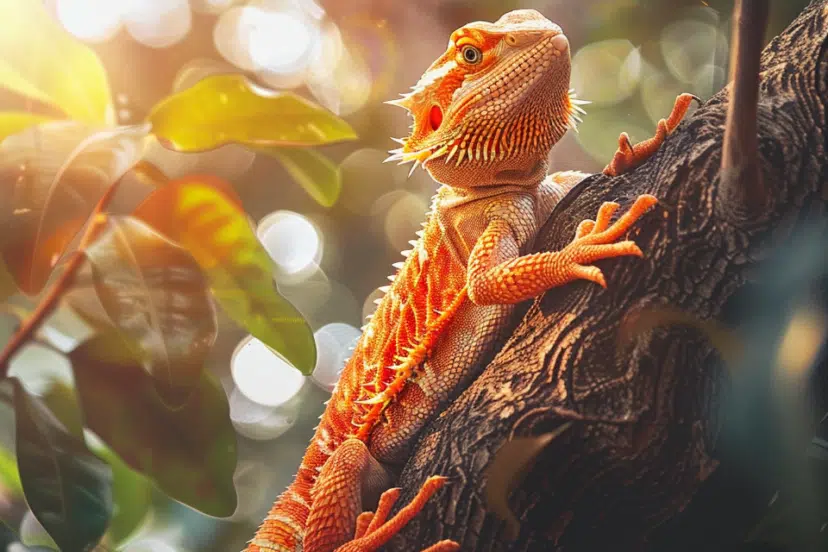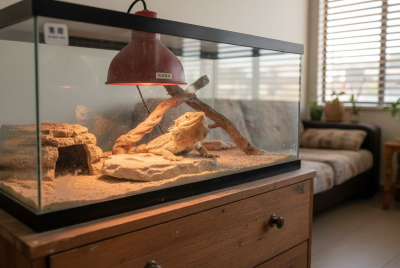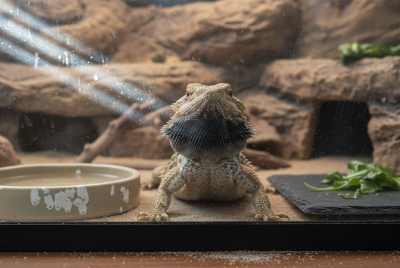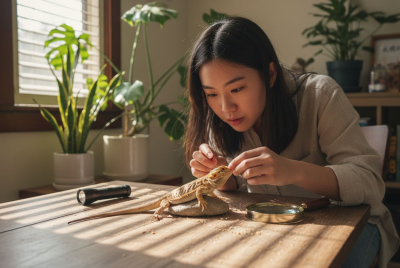Bearded Dragon Citrus: A Comprehensive Care Guide
Owning a citrus bearded dragon is like bringing a vibrant little piece of the desert into your home. These bright, yellow-hued dragons are not just visually striking but are also incredible pets to care for. In this guide, I’ll walk you through everything you need to know about owning a citrus bearded dragon, from their unique appearance to their specific care requirements. Whether you’re a first-time dragon owner or looking to add another to your collection, this guide is packed with everything you need to ensure your citrus beardie thrives.
What Is a Citrus Bearded Dragon?
A citrus bearded dragon is a morph, or variant, of the common bearded dragon, scientifically known as Pogona vitticeps. The “citrus” part of their name comes from their bright yellow and orange coloration, which can range from a soft lemon shade to a more intense orange hue. These dragons are selectively bred for this color, making them one of the most popular morphs among reptile enthusiasts.
Distinctive Appearance of Citrus Bearded Dragons
The citrus morph stands out because of its stunning yellow tones that give it the “citrus” name. You’ll often see vibrant yellow scales covering their bodies with orange undertones, making them eye-catching and exotic. Their appearance can sometimes change slightly as they mature, but the bright coloring is a consistent and defining feature.
Difference Between Citrus and Other Morphs
While there are many bearded dragon morphs, including the red, hypo, and leatherback variants, the citrus stands out due to its warm, sunny color. Other morphs might have unique scale textures or patterns, but the citrus’s appeal is mostly in its color. This makes them a popular choice for those who want a visually striking pet.
Understanding the Temperament of Citrus Bearded Dragons
Like other bearded dragons, citrus morphs are known for their docile and friendly nature. They’re curious but calm, making them excellent companions for both new and experienced reptile keepers.
Why Citrus Bearded Dragons Make Great Pets
Their easygoing nature and the ability to form bonds with their owners make citrus bearded dragons a fantastic choice for reptile lovers. They are relatively low-maintenance compared to other reptiles and are generally well-mannered, which means they’re great even for kids.
Behavioral Traits You Can Expect
You can expect your citrus dragon to spend its day basking under its heat lamp, exploring its enclosure, and occasionally giving you a friendly wave (yes, they do that!). They’re active during the day (diurnal) and are typically calm when handled, making them a joy to interact with.
Housing and Habitat Requirements for Citrus Bearded Dragons
Providing the right environment for your citrus bearded dragon is key to its health and happiness. Let’s talk about the best way to set up their habitat.
Choosing the Right Tank Size
As adults, citrus bearded dragons can grow up to 24 inches in length, so they need a tank that’s at least 40 gallons. However, the bigger, the better! A 75-gallon tank or larger gives your dragon plenty of room to move around.
Ideal Temperature and Humidity Levels
Your dragon’s enclosure should have a temperature gradient with a basking spot that reaches 95°F to 110°F and a cooler area around 75°F to 85°F. At night, the temperature can drop to around 65°F to 75°F. Humidity should be kept low, around 30-40%.
Proper Lighting and UVB Requirements
UVB lighting is essential for your citrus dragon’s health. Without it, they can develop serious issues like metabolic bone disease. Make sure they have 12-14 hours of UVB light per day, and replace the bulbs every six months to keep them effective.
Substrate Options: The Dos and Don’ts
When it comes to substrates, avoid loose materials like sand or wood chips as they can cause impaction if ingested. Reptile carpet, tile, or paper towels are safer and easier to clean.
Feeding Your Citrus Bearded Dragon
A balanced diet is crucial to keep your citrus bearded dragon healthy. Here’s what you need to know about feeding your dragon.
Ideal Diet: What to Feed Your Dragon
Citrus bearded dragons are omnivores, so they need a mix of both insects and vegetables. Crickets, dubia roaches, and mealworms are great protein sources, while leafy greens like collard greens, mustard greens, and squash should make up the bulk of their plant-based diet.
Feeding Schedule and Portion Sizes
Juveniles need to be fed insects daily along with vegetables, while adult dragons can be fed insects every other day with a larger focus on vegetables. A general rule is to offer as many insects as they can eat in 10-15 minutes.
What Foods to Avoid
Avoid feeding your citrus dragon avocado, spinach, or fireflies, as these can be toxic. Also, stay away from citrus fruits because the acidity can upset their digestive system.
Common Health Issues in Citrus Bearded Dragons
Like all pets, citrus bearded dragons are prone to certain health problems. Knowing what to look for can help you act quickly if your dragon gets sick.
Recognizing Signs of Illness
Signs of illness in citrus bearded dragons include lethargy, lack of appetite, sunken eyes, and abnormal poop. If you notice any of these, it’s time to visit a vet.
Common Health Problems in Citrus Morphs
Citrus bearded dragons can suffer from impaction, metabolic bone disease, and respiratory infections if their environment or diet isn’t properly managed.
Handling and Socializing with Your Citrus Bearded Dragon
Regular handling helps your citrus dragon get comfortable with you, but it’s important to do it right to avoid stress or injury.
Best Practices for Safe Handling
Always support your dragon’s body fully, and never grab them by the tail. Be gentle and avoid sudden movements to keep them calm.
How to Build Trust with Your Dragon
Spend time near their enclosure, hand-feed them treats, and handle them regularly to build trust. Over time, they’ll come to recognize and trust you.
Grooming and Hygiene
Keeping your citrus bearded dragon clean is vital to their health and well-being. Luckily, they don’t need too much grooming.
Bathing and Shedding Tips
Citrus dragons shed regularly, especially as juveniles. You can help by giving them warm baths and providing rough surfaces in their enclosure to rub against.
Nail Trimming and Care
Overgrown nails can make it hard for your dragon to move around. Trim their nails carefully, or ask a vet if you’re unsure how to do it.
Breeding Citrus Bearded Dragons
Breeding citrus bearded dragons can be rewarding, but it’s not something to take lightly. Here’s what you need to know before getting started.
Important Factors to Consider Before Breeding
Before breeding, make sure you have enough space for the eggs and babies, and be prepared for the time commitment it takes to care for them.
Mating Behavior and the Breeding Process
When ready to breed, male dragons will display head bobbing and arm-waving to attract females. The actual breeding process can take a few minutes, but be prepared for the long haul when it comes to egg incubation and care for the hatchlings.
Conclusion
Owning a citrus bearded dragon is a rewarding experience. Their friendly temperament, stunning appearance, and low-maintenance care make them a fantastic pet for both beginners and experienced keepers. With the right habitat, diet, and attention, your citrus bearded dragon will thrive for many years to come.
FAQs
1. How long do citrus bearded dragons live?
Citrus bearded dragons can live between 10-15 years with proper care.
2. How often should I handle my citrus bearded dragon?
It’s best to handle your dragon daily to build trust and keep them accustomed to human interaction.
3. Can citrus bearded dragons live together?
It’s not recommended to house multiple bearded dragons together, as they can become territorial and aggressive.
4. Do citrus bearded dragons need supplements?
Yes, they need calcium and vitamin D3 supplements to prevent metabolic bone disease.
5. How often should I clean my citrus dragon’s tank?
Spot clean the tank daily and do a full clean every two weeks to maintain hygiene.




